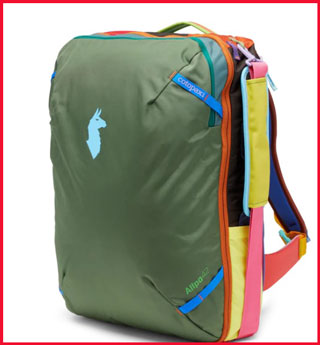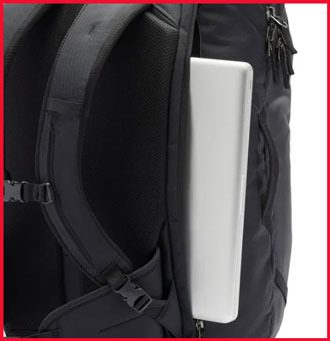As an outdoor enthusiast who’s spent countless weekends hiking, camping, and chasing adventures, I’ve come to rely on gear that can keep up with my passion. Choosing between brands like Cotopaxi and The North Face is a decision many of us face when gearing up for the next trail or summit. In this article, I’ll compare these two outdoor giants, weighing their pros and cons from a real user’s perspective. Through personal insights, a detailed comparison, and key feature breakdowns, I’ll help you decide which brand suits your adventures best. Let’s get started and find your perfect gear match!
A Brief Comparison Table
| Feature | Cotopaxi | The North Face |
| Price Range | Mid to high ($50-$400) | Mid to high ($50-$500) |
| Sustainability | B Corp, 96% recycled materials | Some recycled materials, less focus |
| Design Aesthetic | Bold, colorful, unique patterns | Classic, functional, muted tones |
| Durability | High, with lifetime warranty | Very high, industry-standard |
| Target Audience | Adventurous, eco-conscious travelers | Broad, from casual to technical |
| Product Range | Backpacks, jackets, travel gear | Wide range, including technical gear |
| Social Impact | Strong, via Cotopaxi Foundation | Limited, some community initiatives |
| Availability | Limited retail, strong online | Widely available, global presence |
My Journey With Outdoor Gear
Read More: My Thought on KÜHL Vs. fjallraven
I’ve always been drawn to the outdoors—there’s something about the crunch of leaves underfoot or the crisp air of a mountain morning that feels like home. Over the years, I’ve tested gear from countless brands, but Cotopaxi and The North Face have consistently stood out. Whether I’m scaling a rocky trail in Colorado or backpacking through South America, my gear needs to be reliable, comfortable, and ideally, reflective of my values. Both brands have their strengths, but they cater to slightly different adventurers. Let’s break down what makes each tick, based on my experiences and research.
Cotopaxi: The Vibrant Upstart
Cotopaxi burst onto the scene in 2014, founded by Davis Smith, who was inspired by his childhood in Latin America and the towering volcano, Cotopaxi, in Ecuador. The brand’s ethos is all about adventure with a purpose, blending bold designs with a commitment to sustainability and social good. As someone who cares about the planet, I was instantly drawn to their mission.
Pros Of Cotopaxi

- Sustainability First: Cotopaxi is a certified B Corporation, meaning they meet rigorous standards for environmental and social responsibility. Over 96% of their products use recycled, repurposed, or sustainably sourced materials. For example, their Del Día collection uses leftover fabric from other manufacturers, ensuring no two bags are exactly alike. I love the idea that my backpack is one-of-a-kind while reducing waste.
- Social Impact: Every purchase supports the Cotopaxi Foundation, which funds grants for poverty alleviation and education in developing countries. When I bought my Allpa 35L travel backpack, knowing part of my money went to a good cause felt rewarding.
- Unique Aesthetic: Cotopaxi’s gear is a riot of color—think bright oranges, blues, and quirky patterns. My Fuego Down Hooded Jacket in a vibrant teal always gets compliments on the trail. It’s a refreshing change from the usual muted outdoor palette.
- Lifetime Warranty: Cotopaxi stands by their products with a lifetime warranty for repairs or replacements. When a zipper on my backpack snagged after a year, they fixed it free of charge, no questions asked.
- Travel-Friendly Design: Their gear, like the Allpa 35L, is designed with travelers in mind. It’s carry-on compliant, with a suitcase-style opening and plenty of compartments. I’ve taken mine across three continents, and it’s held up beautifully.
Cons Of Cotopaxi
- Higher Price Point: Cotopaxi isn’t cheap. My Allpa 35L cost around $200, and their jackets can hit $250-$300. The premium price reflects their sustainable materials and ethical production, but it’s a stretch for budget-conscious adventurers.
- Limited Technical Gear: Cotopaxi focuses on travel and casual outdoor gear, not highly technical equipment. If you’re into extreme mountaineering or need specialized climbing gear, they don’t have the range of The North Face.
- Availability Challenges: Cotopaxi’s retail presence is limited compared to The North Face. I often have to order online, which can be a hassle if I want to try something on first.
- Less Brand Recognition: While Cotopaxi is gaining traction, it’s not as universally known as The North Face. This can make it harder to find reviews or get advice from fellow adventurers.
The North Face: The Industry Titan
The North Face has been a staple in outdoor gear since 1966, named after the coldest, most unforgiving side of a mountain. It’s the brand I see everywhere—from city streets to remote trails. Their reputation for durability and performance is hard-earned, and I’ve relied on their gear for years.
Pros Of The North Face

- Unmatched Durability: The North Face gear is built to last. My Summit Series jacket has survived blizzards, rocky scrambles, and years of heavy use without a tear. Their products are rigorously tested for extreme conditions, making them a go-to for serious adventurers.
- Wide Product Range: From casual fleeces to technical mountaineering gear, The North Face has it all. Whether I need a lightweight windbreaker for a summer hike or a heavy-duty parka for winter camping, they’ve got me covered.
- Global Availability: You can find The North Face in nearly every outdoor retailer, from REI to local shops. When I needed a new pair of gloves on a trip, I walked into a store and had plenty of options.
- Trusted Reputation: With decades in the industry, The North Face is a name you can trust. Their gear is backed by a lifetime warranty, and I’ve never had an issue getting repairs or replacements.
- Technical Innovation: The North Face invests heavily in research and development. Features like Gore-Tex waterproofing, PrimaLoft insulation, and FutureLight technology make their gear top-tier for performance. My Venture 2 jacket with Gore-Tex kept me dry during a torrential downpour in the Rockies.
Cons Of The North Face
- Less Focus on Sustainability: While The North Face uses some recycled materials, their sustainability efforts lag behind Cotopaxi. They’re not a B Corp, and their supply chain transparency could improve. As someone who prioritizes eco-friendly brands, this is a drawback.
- Higher Costs for Premium Gear: Their top-tier technical gear, like Summit Series, can cost $400-$500 or more. I winced when I paid $450 for a down parka, even though it’s been worth every penny.
- Generic Aesthetic: The North Face’s designs are functional but often lack the flair of Cotopaxi. Their color palette sticks to blacks, grays, and earth tones, which can feel uninspired compared to Cotopaxi’s vibrant hues.
- Mass-Market Perception: Because The North Face is so ubiquitous, it’s sometimes seen as less exclusive. I’ve noticed their logo on everything from high school backpacks to expedition gear, which can dilute its “adventure” vibe.
Key Features Breakdown
Let’s talk specifics. Both brands offer standout products, but their features cater to different needs. Here’s how they stack up based on my experiences.
Backpacks
- Cotopaxi Allpa 35L: This is my go-to for travel. It’s a 35-liter pack with a full-zip opening, padded laptop sleeve, and multiple compartments for organization. The Del Día version uses unique, repurposed fabrics, and it’s carry-on friendly. I love how it transitions from airports to trails seamlessly. However, it’s not ideal for heavy-duty backpacking due to its lighter frame.
- The North Face Borealis: A 28-liter classic, the Borealis is perfect for day hikes or commuting. It has a padded back panel, plenty of pockets, and a durable build. I’ve used mine for years, and it still looks new. It’s less travel-focused than the Allpa but more versatile for everyday use.
Jackets

- Cotopaxi Fuego Down Hooded Jacket: This jacket is lightweight, packable, and warm, with 800-fill down insulation. The bold colors make it a standout, and it’s great for casual winter adventures. I wore mine in 20°F weather and stayed toasty, but it’s not designed for extreme conditions.
- The North Face Summit Series L5 Jacket: Built for high-altitude expeditions, this jacket uses Gore-Tex Pro and PrimaLoft Gold for unmatched weather protection. I’ve worn it in brutal winds and stayed comfortable. It’s overkill for casual use but a lifesaver for serious outdoor pursuits.
Fleeces
- Cotopaxi Otero Fleece: This half-zip fleece is soft, warm, and stylish, with a relaxed fit. I wear it for chilly hikes or layering under a jacket. The recycled polyester feels good on the conscience, but it’s not as technical as The North Face options.
- The North Face TKA Glacier Fleece: A lightweight, durable fleece that’s a staple for layering. It’s breathable and quick-drying, perfect for active pursuits. I’ve used mine for everything from skiing to campfire evenings, and it holds up well.
My Personal Take: Which Brand Wins?
Choosing between Cotopaxi and The North Face depends on what you value most. If sustainability, social impact, and a bold aesthetic are your priorities, Cotopaxi is hard to beat. Their gear feels personal, and I love supporting a brand that’s making a difference. However, if you need versatile, technical gear for extreme conditions, The North Face is the clear winner. Their durability and range are unmatched, though they come at a cost—both financially and environmentally.

For me, it’s not an either-or decision. I own gear from both brands and use them for different purposes. My Cotopaxi Allpa is my travel companion, while my North Face Summit Series jacket is my go-to for high-altitude treks. Your choice will hinge on your adventures, budget, and values. If you’re a casual hiker or traveler who loves vibrant designs and eco-conscious brands, Cotopaxi might be your vibe. If you’re tackling serious outdoor challenges or need widely available gear, The North Face has the edge.
Frequently Asked Questions
Patagonia is arguably The North Face’s biggest competitor, known for its sustainability focus and high-quality outdoor gear. Cotopaxi is a rising contender but doesn’t yet match Patagonia’s market share.
Cotopaxi’s prices reflect their use of sustainable, recycled materials and ethical production practices. As a B Corp, they prioritize fair labor and environmental responsibility, which increases costs but ensures quality and impact.
Cotopaxi stands out for its vibrant, unique designs, B Corp certification, and commitment to social good through the Cotopaxi Foundation. Their gear, like the Del Día collection, uses repurposed materials, making each piece one-of-a-kind.
People love Cotopaxi for its bold aesthetics, eco-friendly approach, and social impact. The brand’s focus on sustainability, lifetime warranties, and travel-friendly gear resonates with adventurers who value style and purpose.
Conclusion
Read More: My Thought on KÜHL Vs. fjallraven
You’re standing at the crossroads of adventure, deciding between Cotopaxi and The North Face for your next journey. I’ve shared my experiences to help you weigh their pros and cons, from Cotopaxi’s vibrant, sustainable gear to The North Face’s durable, technical prowess. Whether you choose Cotopaxi’s eco-conscious flair or The North Face’s tried-and-true performance, both brands will elevate your outdoor experiences. Pick what aligns with your values and adventures—you can’t go wrong. Now, get out there and make some unforgettable memories!
